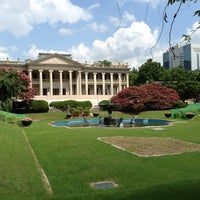See all Things to do in Seoul
Deoksugung Palace
Jung-guAbout
The smallest of the city's palaces, Deoksugung is located at the corner of one of downtown Seoul's busiest intersections. It is known for its stone wall and the walk along its outside. Deoksugung ("Palace of Virtuous Longevity") originally belonged to Wolsandaegun, the older brother of Joseon Dynasty King Seongjong, but later became a proper palace when Gwanghaegun (Prince Gwanghae) took the throne in 1608. The east wing was for the king and the west wing was reserved for the queen. In 1900, Jeonggwanheon was the first Western-influenced building to be added to the palace grounds. The red and grey brick structure features massive columns, ornate balconies, and a green tile roof. King Gojong, who reigned from 1863-1907, enjoyed having coffee and spending his free time there. The back of the building had a secret passageway, which still exists, to the Russian Emissary. The other Western-style building is Seokjojeon, which was designed by a British firm in 1905, when the Japanese occupied Korea. It was completed in 1910 and became a Japanese art gallery after King Gojong's death in 1919. After Korean independence from Japan, a joint commission of Americans and Russians held meetings there in 1946 in an attempt to reunite North and South Korea. The east wing of Seokjogwan now serves as a gallery for Palace Treasure exhibitions and the west wing is part of the National Modern Arts Center.
